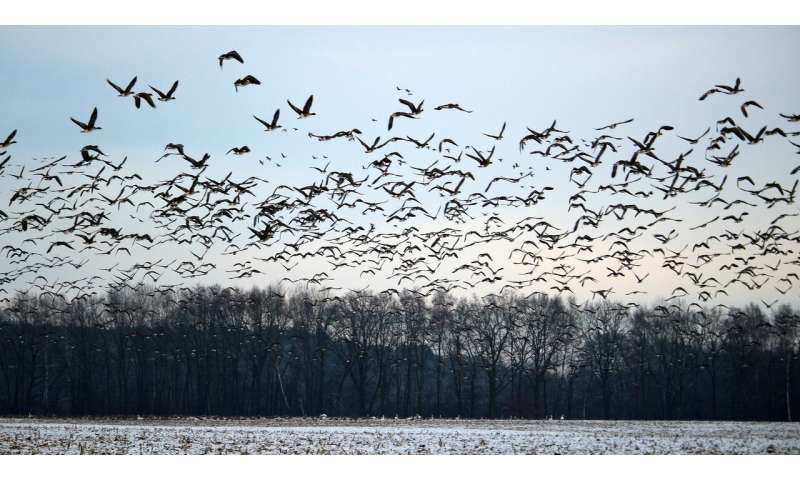Predicting 50,000 years of bird migrations

Neither wind, nor rain—nor massive sheets of ice—have kept Earth's birds from their appointed rounds of migrating to better climes, according to a new study.
That's the conclusion of a new study from the Max Planck-Yale Center for Biodiversity Movement and Global Change (MPYC), which simulated global bird migrations during scenarios of past climate conditions. The researchers said that, in the Americas in particular, migrating birds successfully maneuvered vastly changing landscapes in the past 50,000 years.
"Our simulations predict that bird migration worldwide has remained relatively constant over this period, suggesting an origin for this phenomenon that is older than the glacial cycles of recent Earth history," said first author Marius Somveille, a former MPYC researcher who is starting a postdoctoral position at Colorado State University.
Yet there has been regional variation in migrating birds' response to climate change, the researchers said. In the Americas, for example, there has been a larger increase in the distances that birds have migrated over the past 50,000 years, compared with other parts of the world.
"In the last ice age, up to about 18,000 years ago, North America had an ice sheet that covered a large part of the continent and prevented bird species from living there," said Yale's Walter Jetz, senior author of the study, professor of ecology and evolutionary biology, and co-director of MPYC.
"This ice sheet retreated and birds colonized the land—and those birds were likely highly migratory, as seasonality in this area was pronounced. Our simulations suggest that toward the present this part of the world has seen both migratory distances and migration activity significantly increase," he said.
The study appears in the journal Nature Communications.
Using existing data about the global distribution of migratory birds, the researchers created a model that predicted migrations based on energy efficiency: They positioned each species' breeding and non-breeding ranges in a way that accounted for the availability of food and how much energy birds would reasonably expend during migration.
To estimate migration activity far in the past, the researchers applied their model to reconstructions of past climate conditions.
Co-author and MPYC co-director Martin Wikelski of the Max Planck Institute of Animal Behavior said the findings may be of use to conservationists and policymakers because the simulations "have the potential to inform predictions of how future climate change will impact bird migrations."How will the winds of climate change affect migratory birds?
More information: Marius Somveille et al. Simulation-based reconstruction of global bird migration over the past 50,000 years, Nature Communications (2020). DOI: 10.1038/s41467-020-14589-2
No comments:
Post a Comment